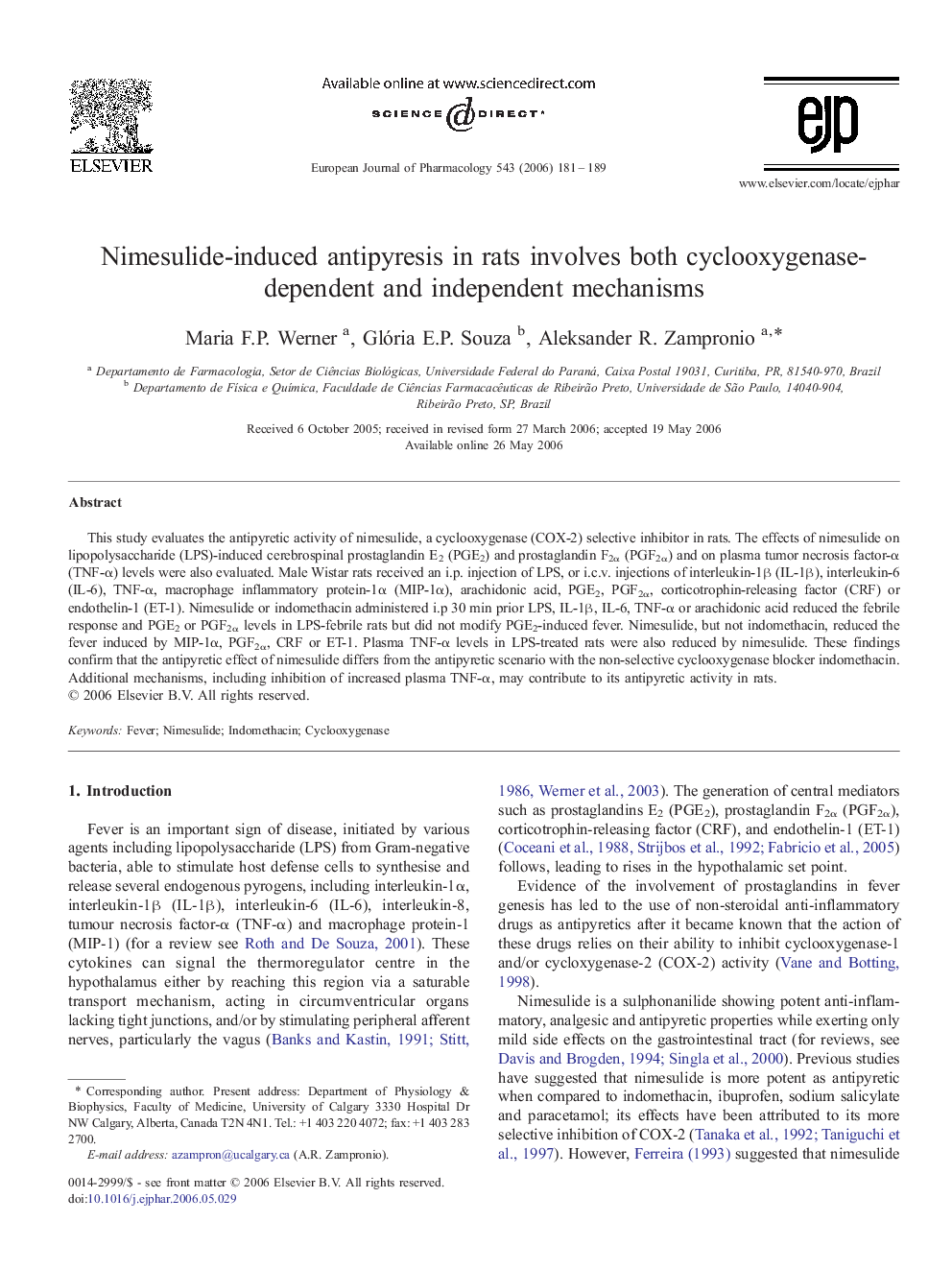| Article ID | Journal | Published Year | Pages | File Type |
|---|---|---|---|---|
| 2536997 | European Journal of Pharmacology | 2006 | 9 Pages |
This study evaluates the antipyretic activity of nimesulide, a cyclooxygenase (COX-2) selective inhibitor in rats. The effects of nimesulide on lipopolysaccharide (LPS)-induced cerebrospinal prostaglandin E2 (PGE2) and prostaglandin F2α (PGF2α) and on plasma tumor necrosis factor-α (TNF-α) levels were also evaluated. Male Wistar rats received an i.p. injection of LPS, or i.c.v. injections of interleukin-1β (IL-1β), interleukin-6 (IL-6), TNF-α, macrophage inflammatory protein-1α (MIP-1α), arachidonic acid, PGE2, PGF2α, corticotrophin-releasing factor (CRF) or endothelin-1 (ET-1). Nimesulide or indomethacin administered i.p 30 min prior LPS, IL-1β, IL-6, TNF-α or arachidonic acid reduced the febrile response and PGE2 or PGF2α levels in LPS-febrile rats but did not modify PGE2-induced fever. Nimesulide, but not indomethacin, reduced the fever induced by MIP-1α, PGF2α, CRF or ET-1. Plasma TNF-α levels in LPS-treated rats were also reduced by nimesulide. These findings confirm that the antipyretic effect of nimesulide differs from the antipyretic scenario with the non-selective cyclooxygenase blocker indomethacin. Additional mechanisms, including inhibition of increased plasma TNF-α, may contribute to its antipyretic activity in rats.
